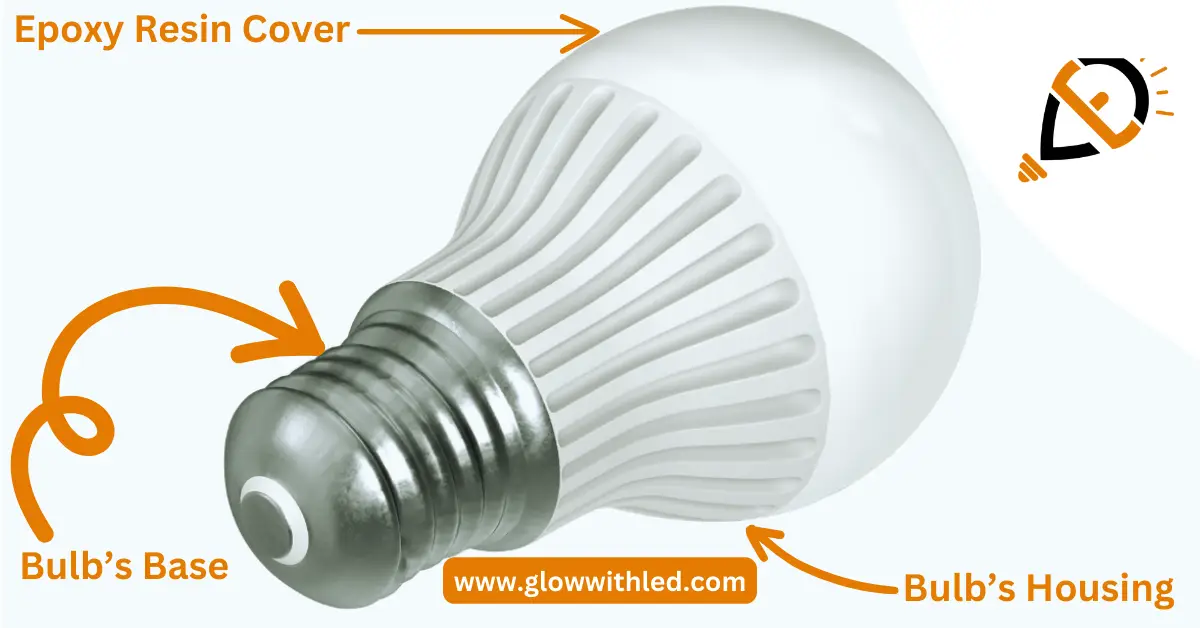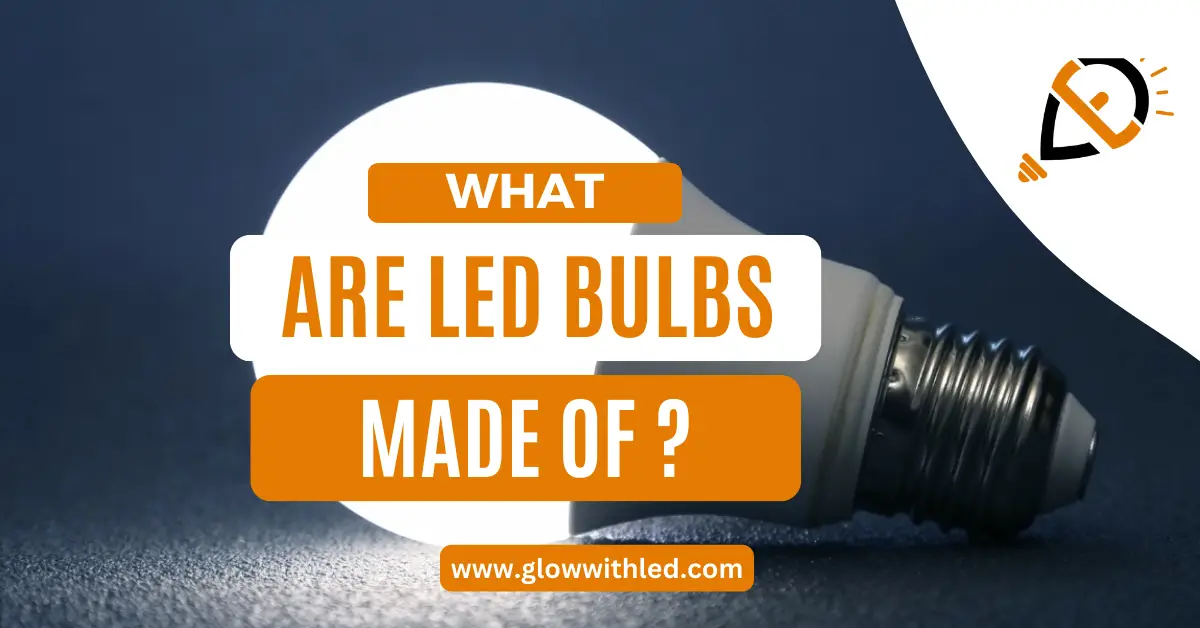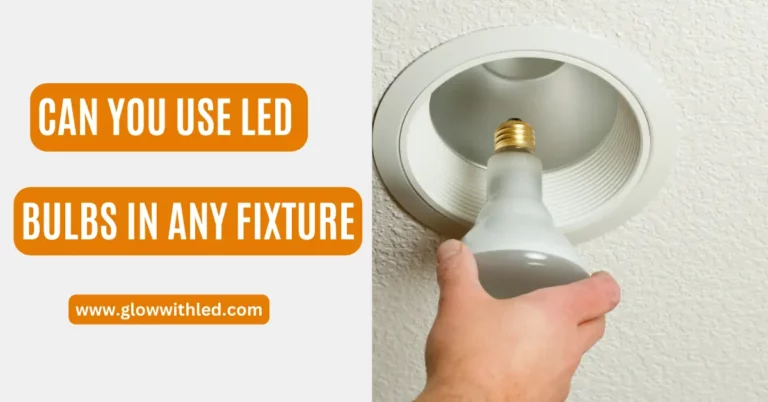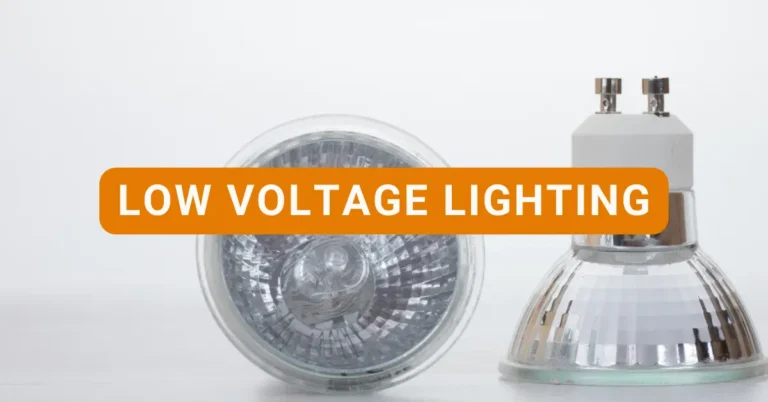What Are LED Bulbs Made Of?
LED bulbs are the in-demand lighting technology due to their unique features among other light bulbs. They are preferred due to their efficiency, durability, and color options. These bulbs are also known as energy efficient light bulbs.
If you are going to buy LED bulbs, you might be curious about What are LED bulbs made of.
Semiconductors in LED bulbs emit light when current passes through them. These Semiconductors are made from gallium, arsenic, and phosphorus. Further, aluminum is used in LED bulbs for the thermal conductivity.
The outer coverage of the bulb is made from hard durable plastic or glass that protects the inner parts of the bulb and helps light to diffuse easily.
Different components work together to regulate the amount of current, produce less heat, and dissipate it regularly to protect the bulb from fluctuation and increase its lifetime.
If you are willing to use LED bulbs to light up your surroundings, it’s important for you to have knowledge about the materials used in bulbs to ensure your own safety and power usage.
Let’s discuss in detail the materials that are used to make LED bulbs.
Which Components Are Used to Make an LED Light Bulb?

There are six standard components that are used in the manufacturing of LED bulbs. Let’s discuss what are these components and what is their function.
1. Bulb Base
The base of the bulb is the part that provides the electrical contact between the bulb and the socket. It provides support to the bulb that holds it within the socket. Bulb bases have different designs depending on the types of sockets.
You can easily fit most LED bulbs in standard bulb sockets but some bulbs have special sockets depending on the design of the base.
Ranges of sizes and designs of bulb bases are available. So, before fitting a bulb into the socket, it’s important to check the compatibility of the bulb base and socket.
2. Bulb Housing
It is the middle section of the bulbs that contain the internal components and protects the circuitry inside.
It contains diodes, drivers, and heat dissipators and provides protection for them.
The function of bulb housing only contains elements of bulbs, the other functions such as light emission, heat dissipation, and light diffusion are done by each specific element.
3. Chips/Diodes
LED chips or diodes are the crucial component of the bulbs that are responsible for generating light. These chips are the semiconductors that emit light when current passes through them.
Gallium nitride is commonly used in LED chips that are responsible for efficient light emission.
4. LED Drivers
LED drivers are the control unit in LED bulbs. Their function is to maintain the required current and voltage within the bulb. This helps to protect bulbs from damage.
LED bulbs operate on Direct Current, the function of drivers is to convert AC to DC.
Most LED drivers have the dimmer function, which is responsible for the adjustment of the brightness of the light.
5. Heat Sink/ Dissipater
Although LED bulbs are the most efficient lighting technology, they produce a small amount of heat. If that heat can’t dissipate, it will affect the lifetime of the bulb.
So, heat dissipators are used in LED bulbs that absorb the heat from the chips and dissipate it to the environment. Typically, aluminum is used in heat dissipators to maintain the temperature within the bulb.
6. Bulb Cover
LED bulb covers are also known as bulb diffusers made from plastic or glass. Bulb covers serve multiple functions for lighting and safety.
They help bulbs to diffuse light and distribute it in all directions. They soften the intensity of light and alter the color temperature or hue of light.
Moreover, covers protect the inner components of bulbs from dust, moisture, and damage.
What Chemicals Are Used in Led Lights?
LED light bulbs don’t contain any harmful chemicals just like other light bulbs.
In LED bulbs, commonly gallium, arsenic, and phosphorus are used as semiconductor material. Their composition depends on the specific mode of lighting.
Below are the main components present in the semiconductors of LED bulbs.
- Aluminum Indium Gallium Phosphide is used in yellow, orange, and red, high brightness LED bulbs.
- Gallium phosphide is used in yellow and green LEDs.
- Indium Gallium Nitride is used in blue, green, and ultraviolet high-brightness LEDs.
- Aluminium Gallium Arsenide is used in red and infrared LED lights.
Moreover, aluminum is used in LED bulbs as a heat sink due to its high thermal conductivity.
Do RGB LED Lights Have Different Components?
LED light bulbs are not only available in just white or yellow color, multi-colored LED bulbs are also available. If you ever feel confused about the types and sizes of LED bulbs, you can read the complete guide on choosing the right type of LED bulb.
RGB LED light bulbs have almost the same components as regular LED bulbs. But as RGB bulbs perform different functions than regular bulbs, there is a difference in diodes of semiconductors.
The diodes in regular bulbs produce only visible white or yellow light but in RGB bulbs, the diodes produce plenty of colors by combining Red, Blue, and Green colors.
Also, RGB bulbs have different drivers that control color production.
Let’s discuss the components of RGB LED bulbs that are different or extra from regular LED bulbs.
- RGB bulbs contain Red, Green, and Blue chips that emit a specific color. Different colors of light can be achieved by adjusting the intensity of these three colors. You can get hundreds of colors by just these three colors.
- RGB bulbs have special drivers that are also called controllers for LED bulbs. These drivers allow the chip to create various colors and regulate the intensity of each color.
- In the modern RGB lights, a processor is used to control the lighting effect.
- RGB bulbs have specific diffusers and reflectors that have a dimming function.
What Material is Used for an LED Bulb Cover?
LED bulb covers are made of plastic or glass. They are used to diffuse the light and scatter in all directions around the bulbs. They also provide protection to the inner components of the bulb.
Let’s discuss what is different between plastic bulb covers and glass covers.
Polycarbonate (PC) plastics are used in LED bulb covers that a naturally transparent amorphous thermoplastic. Such bulb covers are lightweight, high in durability, and more flexible than glass covers.
Glass covers are more clear than plastic bulbs and release bright light. They are highly resistant so they are preferred in situations where aesthetics and heat management are crucial.
Can an LED Bulb Be Used Without an LED Cover?
Technically it’s possible to use an LED bulb with a cover but it has many disadvantages related to the protection of the bulb.
The bulb cover serves many important purposes that can’t be possible without bulbs.
Bulb covers protect the inner part of the bulb. The inner part is highly sensitive and can be damaged by dust and moisture. So, cover protects them from physical damage.
Moreover, the bulb cover diffuses the light. Without cover, it seems to be impossible to diffuse light.







